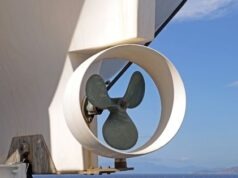If you like to have an exotic pet, a zebra tarantula is an ideal candidate. Despite their mysterious nature and hairy bodies, these tarantulas are harmless to humans. If you are interested in keeping a zebra spider as a pet, here are some interesting facts you must know.


1. Physical Characteristics
The tarantulas are around 10cm to 13cm in length. The male spiders may be smaller. Their body color is either black or brown. They have white longitudinal lines running across the body, which gave them the name “Zebra tarantula.” The female spider lays up to 2000 eggs in their protected web. The spiderlings spend most of their time in burrows spinning dense webs. The zebra spiders rarely bite unless they are provoked.
2. Behavior and Temperament
These creatures move very fast, and if you want your pet to move slowly on your hand, they are not an ideal candidate as pets. When startled, they move at lightning speeds, and you can have a hard time catching your pet. Trying to pick up this spider or catching it while it is running might injure your pet. If the tarantula falls from the cage or substantial height, it might get injured. However, gentle handling and daily socialization can tame these spiders to some extent.
3. Food and Water
Like most tarantulas, the zebra tarantula is a carnivore. It prefers eating live prey. These spiders love eating crickets. To keep your pet healthy and support its growth, you should carefully plan your pet’s diet. You can give your zebra spider pet insects like cockroaches, beetles, and grasshoppers. You can catch these insects and feed them to your zebra spider. However, make sure these insects are feeding on pesticide-free spoilage.
4. Housing
If you plan to buy this tarantula, you need to get ideal housing for it. A 5 to 10-gallon aquarium might be adequate for this species of spider. The housing should be wide enough; three-time wider than your spider’s leg span.
The spider enclosure should be tall enough to fill in a sufficient substrate quantity that the spider can use to make a burrow. Since these spiders are always climbing, you should avoid mesh-like enclosures.
Also, the enclosure should be escape-proof. The substrate laid in the enclosure should be at least 4 inches thick and made of peat moss, vermiculite, and soil. A hollowed cork bark, log of wood, half of the clay flowerpot can be used for a shelter.
It would help if you also kept a bowl of water for your spider pet. It needs water for drinking and to maintain the humidity of the enclosure. Make sure you remove any uneaten food from the enclosure. The substrate should be damp and not wet.
5. Common Health Problems
Spiders seldom fall ill. However, it would help if you protected your spider pet from falls. Even a shorter fall can cause injury to its egg-shaped abdomen, causing death. When handling your pet, always sit in a low spot. If the spider is hovering over the water bowl but not drinking, it is not a health issue. The spider is seeking hydrated air, which is quite normal.
To sum up, these facts provide you with the necessary information about zebra tarantula and help you raise them properly.









